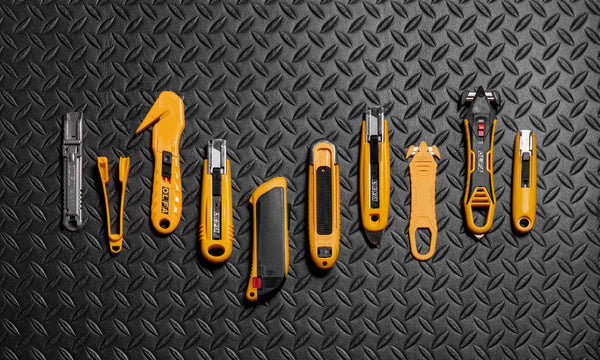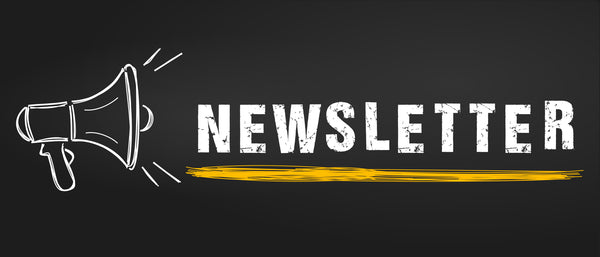
Q&A with OLFA PRO All-Stars on Prioritizing the Right Tools
Whatever the job may be, safety should always be the number one priority. That is why it’s essential to have the right tools for the job! The correct equipment ensures your team's protection while promising efficiency for the task at hand.
We talked to OLFA Pro All-Stars: Jacob, Desmond, Josh, Lee, and Ryan about how they prioritize the right tools for any task. Here’s what they had to say:

How do you know which tools to prioritize for your work?
Jacob: First, it depends on the task at hand. If I am cutting something, I’d evaluate if it’s a hard or dense product, which would lead me to choose a wider or sharper blade. If I am scraping something, I prioritize by asking how big of a product do I need to scrape, like removing a small level versus overspray on a big window.
Josh: I’m on different job sites almost daily, with different tasks all the time. I always carry a tool bag with some of my most used tools, including OLFA knives. In my trade, I need to know what materials I am working with to decide which tool to prioritize.
Lee: I consider the task at hand and choose the most appropriate and safe. If I need precision, I will choose a smaller blade. If I need something to remove a lot of material, I choose something a bit beefier.
Why is it important to learn how to choose certain tools versus others?
Desmond: Using the right tool for the job makes a huge difference in efficiency and ease of the job, rather than using the wrong tool and struggling through the task. It is also much safer to choose the correct tool for the job.
Josh: It’s important to learn which tools to choose to remain safe and efficient. An easy slip-up when using sharp tools can result in injury or equipment damage, which in turn will prolong installations.
Ryan: Choosing the right tool for the job isn't just a guessing game. I've found over the years that knowing what tools will work best for a particular application takes time. The experience of trying different tools for the same job is where you find your comfort, safety, and efficiency. Some things can't be taught but must be learned.
How have OLFA’s tools helped you remain safe in your work?
Josh: OLFA tools have helped my team and I remain safe with a few things, but mostly design. The tools and cutting tools are designed to be ergonomic and have control. With proper blade disposal options, long-lasting sharp blades, and comfortable grip handles, they are the best option.
Lee: Sometimes nothing is more dangerous than a dull blade. With OLFA, I know a super sharp blade is only a snap away.
Ryan: OLFA tools have not disappointed me. I have a knife to use for each of my different duties as a carpenter and contractor. Whether I am on a framing job, hanging drywall, or cutting ceiling tiles on a commercial job, OLFA’s knives have kept me moving comfortably and safely. The design has proven to have had thought and care put into each and every knife.
Thin blades and handles for more intricate work and hearty, thicker blades and wholesome handles for really digging into something -- all the bases have been covered, and I appreciate that!
Why do you choose the right tools?
Jacob: Prioritizing the right tool is a balance of efficiency, effectiveness, cost, and safety. Everyone can open a box with a chainsaw, but that’s not safe or cheap.
Josh: I choose the right tools to make sure the job is getting done right. Using the proper tool also decreases body stress, such as hand fatigue or muscle spasms. I’ve learned from the past that taking the extra minute to use the right tool has benefits. Every time you cut yourself, need first aid, damage wires or conductors, scratch or mark equipment, it slows down the installation or decreases professionalism.
Ryan: Knowing what tools to use for certain tasks is important because it not only provides comfort that promotes production, but it also keeps us safe and working efficiently. It takes time and experience to understand what tool will work best for you in each situation.
Should a workplace have guidelines in place to help with tools’ prioritization?
Desmond: Every workplace should have guidelines and policies to reference so that everyone is safer. The key is that these safety policies must be reasonable to allow each person to easily follow them.
Josh: It removes the guessing on which tool is right for the job and in turn makes it a safer environment.
Lee: I believe they should. There are a lot of people out there that don’t know what they are doing. But at the same time, not everyone has the same comfort levels; people should be allowed to use what makes them feel safest.
What are some of the main benefits that come with prioritizing the right tools?
Jacob: Reduced fatigue, safety, and job productivity.
Desmond: Safety and making each task easier.
Josh: The first and foremost benefit of choosing the right tool is safety. The other main one is tool life. Tools will not last as long or will fail if not used properly. If you abuse tools they fail faster, which means more cost to replace them.
Lee: Prioritizing the right tool allows you to work smarter, not harder.
Are there any specific steps you can take to help with tools prioritization?
Jacob: Assigning a task and having the safe and correct tool always handy is a good first step.
Josh: Certain steps I could see in my field are having toolboxes and tool kits labeled for the task at hand. Another easy option is having lists made up for certain jobs that you can refer to when starting your day.
Ryan: Building a tool kit would contain everything needed to perform any of the tasks you may have. I'd rather spend my time thinking about how to perform the work efficiently, than spend time thinking about what tools to bring along.
Not sure where to start when it comes to prioritizing your tools? Sign up for our FREE Safety Evaluation Program to guarantee secure cutting solutions in your workplace, today.



